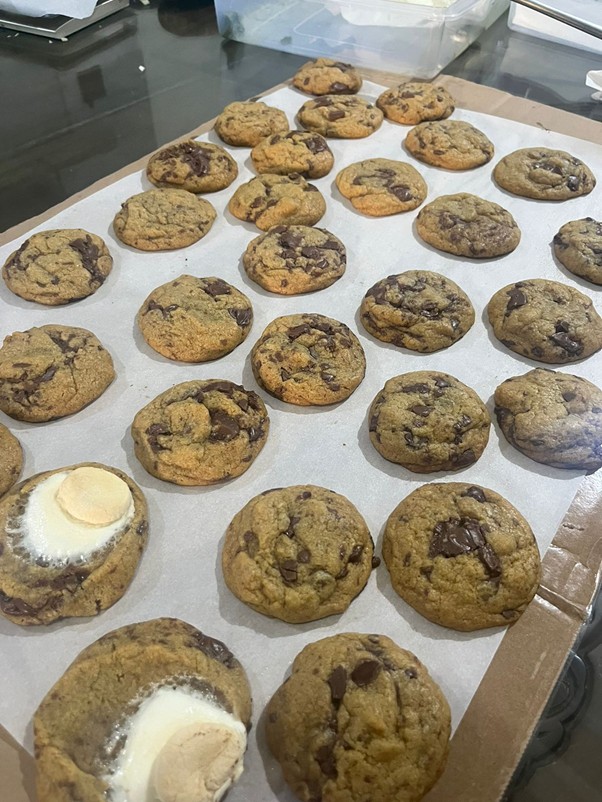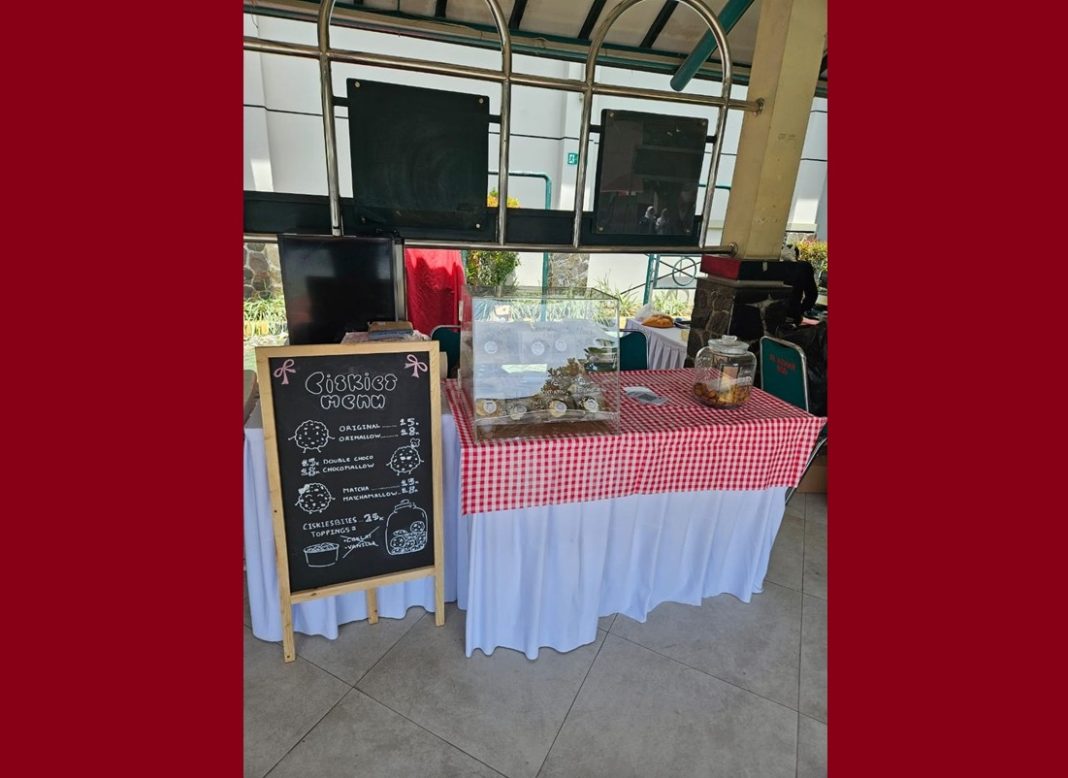“Wait, can chemistry actually earn money?”
My answer? Absolutely — and it tastes wonderfully sweet, richly textured, delectably crispy, and tantalizingly fragrant.
It all began with a simple curiosity: What if baking cookies wasn’t just about cooking, but about applying chemistry? That question led me to the kitchen, which I saw not as a place to cook, but as a personal laboratory. The spoons became my measuring tools, the oven my heating chamber, and the ingredients — butter, sugar, eggs, flour — were my chemical reagents. With this mindset, I created CIS KIES: cookies that are not only delicious but also scientifically precise.
While others saw the kitchen as a place to follow recipes, I saw it as a place to test hypotheses. I didn’t want to just bake cookies — I wanted to understand the molecular magic that turned dough into something golden and irresistible. My cookie journey was born from science class, a desire to innovate, and a deep craving for something uniquely mine.
Step one: Butter and sugar. I started by creaming them together, not just for sweetness but to create a stable emulsion. This step lays the groundwork for the Maillard reaction, a complex process that happens during baking. It’s the science behind the golden-brown color and mouth-watering aroma. Palm sugar added a deeper, almost caramel-like complexity.
Step two: Eggs. Each egg was added carefully, one at a time. The yolk, rich in lecithin, acts as a natural emulsifier, ensuring that all the ingredients blend harmoniously. This matters more than people think — emulsification gives the cookie its perfect texture: moist but not soggy, chewy but not tough.
Step three: Flour and baking soda. This is where structure meets chemistry. The flour provides gluten, a protein that forms a flexible matrix, while the baking soda reacts with acids from the sugar and eggs to produce carbon dioxide. These tiny bubbles lift the dough ever so slightly, creating a crispy edge and a soft center.
But here’s the trick I learned: Chill time. After mixing, I refrigerate the dough for at least 30 minutes. Why? Because solidified fat melts more slowly during baking, keeping the cookies from spreading too thin. It also lets the flavors deepen and mingle. Temperature control isn’t just for labs — it’s crucial in the kitchen too.
Then, the final step: baking. This is when all the transformations happen. Proteins coagulate, sugars caramelize, water evaporates, and the Maillard reaction kicks into high gear. Chemistry turns a sticky lump of dough into a beautiful cookie with a perfect balance of texture and flavor.
And guess what? People loved it. My friends, teachers, and neighbors couldn’t get enough. Orders started rolling in, and I realized this wasn’t just a hobby — it was a business. CIS KIES became a weekend enterprise, complete with customer lists, budgeting spreadsheets, and packaging solutions. I learned to standardize recipes, calculate costs, and maintain quality control.

Running a cookie business taught me far more than I expected. I began tracking feedback, adjusting ingredients, and creating new flavor variants. I even started explaining the science behind my cookies during school events. Chemistry, it turns out, is an amazing way to connect with people.
I’ve started developing healthier alternatives too: whole grain options, less sugar, and even vegan versions. The goal is to keep innovating while staying true to the roots of CIS KIES — chemistry-driven baking. I’m exploring eco-friendly packaging and planning workshops to teach other students how to mix science with sweets.
To my fellow students: if you’re studying reactions, memorizing formulas, or learning about heat and energy, remember — you’re not just passing a test. You’re unlocking the tools to create, solve problems, and maybe even start a business. The chemistry you study today could sweeten your life tomorrow.
So when are you going to bake your version of success? CIS KIES is just the beginning. And it all started with curiosity, butter, and a little bit of baking soda.
Because in the right hands, chemistry isn’t just a subject. It’s a recipe for something amazing.

